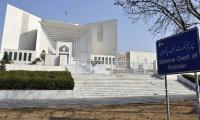If you live in Lahore, there is one thing that you will find common among other city dwellers: it is a constant headache. How many times have you wondered about the unusual headaches that you get repeatedly in a week despite being in good health? Presumably many times, but we take a Panadol for it and ignore the question of where it’s coming from.
So, my dear city folks, it is coming from the continuous honking you hear every day while traveling to your destination. It is coming from the smoke that automobiles are emitting daily on the roads of Lahore. Finally, the relentless surge in traffic on Lahore’s streets has transformed into a constant source of pounding headaches. It has become a regular occurrence for us to find ourselves ensnared in the most aggravating traffic snarls.
As winter is around the corner, the looming prospect of severe smog and fog enveloping our skies becomes a growing concern, ultimately leading to visibility plummeting to near-zero levels. People look forward to early winter as it is some kind of blessing, but it is a grave concern that every year we are witnessing an early start and longer stay of the winter. This is not a blessing but an effect of the dreadful climate change that should be taken seriously. It is a matter of national security.
National security is not limited to protecting citizens from foreign incursions but also involves protecting the wellbeing and interests of people within the geographical boundary of the country. Therefore, national security includes food, water, health, and environmental security.
In his book ‘Pakistan: A Hard Country’, Anatol Lieven has argued that ‘climate change’ is one of the massive challenges that Pakistan faces. Every two years, massive floods hit Pakistan, crippling the country. While it takes almost a decade to recover from the consequences of one flood, Pakistan has to deal with almost five floods per decade.
Ecological disasters like floods have a tendency and potential to collapse the country’s economy in a blink. In the case of the 2010 floods, approximately one-fifth of the entire land area was submerged, leading to the displacement of around 20 million individuals and an estimated $43 billion in damage to infrastructure.
Similarly, between June and October 2022, Pakistan faced devastating floods that resulted in the tragic loss of 1,739 lives and inflicted a staggering Rs3.2 trillion ($14.9 billion) worth of damage, coupled with Rs3.3 trillion ($15.2 billion) in economic losses. These calamities were precipitated by abnormal monsoon rainfall and the accelerated melting of glaciers, both of which have direct connections to the overarching issue of climate change.
Anatol Lieven further states, “what is certainly true is that if floods and other ecological disasters on this scale become regular events as a result of climate change, then Pakistan will be destroyed as a state and an organized society.” Thus, climate change can collapse Pakistan and compromise its economic dimension of national security.
One thing that contributes to the deterioration of climate in Pakistan is mismanaged city planning. For instance, let’s take the example of Lahore which is considered the most polluted city in the world. The current population of Lahore is 13,979,000 which is increasing annually at an average of 3.5 per cent.
According to the census data from the Pakistan Bureau of Statistics, Lahore’s population in 2050 will be 37.71 million. Lahore’s air quality worsened to 97.4 micrograms of PM2. 5 particles per cubic meter from 86.5 in 2021, making it the most polluted city globally. How are we going to manage the population and reduce the pollution in 2050 without taking climate change seriously?
When inquiring about the deteriorating air quality in Lahore, government officials responsible for addressing climate change often engage in a blame-shifting dynamic. They frequently attribute the city’s poor air quality to neighbouring farmers, engaging in a tit-for-tat exchange of accusations. This deflects attention from the root cause, which is the need for comprehensive policy reform in both nations to effectively manage and mitigate air quality issues.
The population boom in Lahore has led to a vehicle surge in the city as well. Lahore has become a precarious city for pedestrians, who make up 40 per cent of the population. According to the collected data, there are approximately 6.2 million vehicles and 4.2 million motorcycles in Lahore alone, which amounts to nearly one-third of all vehicles registered in Punjab. This underscores that people tend to shun public transport for their commute. Despite Lahore boasting sufficient public transport options such as Metro buses, the Orange train, and the Speedo bus service, they still fall short of meeting people’s demands.
For example, if I need to travel from Johar Town to Anarkali Bazar – a journey I can complete in my private vehicle in just 25 minutes – opting for public transport presents a different scenario. First, I must trek at least two kilometres from my residence to reach the Speedo bus station, where I then cross my fingers and hope the bus isn’t overcrowded. Even if I manage to secure a spot on the bus, it would be nothing short of a miracle to find one with available seating.
Let’s assume I do find a seat on the bus, then I have to travel to the Ali Town metro bus station, where I’ll transfer to a metro bus heading to Anarkali. If I’m fortunate, I might snag a seat on the metro bus, otherwise, I’ll be in for a 40-minute journey to reach my destination. A distance that I could easily cover in 25 minutes with my vehicle now takes me approximately 1 hour and 30 minutes using public transportation.
Given the choice, I will unquestionably prefer a private commute to arrive on time and without feeling fatigued. The preference for private transportation in Lahore is not a fault of people but rather a consequence of inadequate policymaking. Instead of addressing the growing need for sustainable transportation options, policymakers are exacerbating the problem with their new city planning policies, such as constructing flyovers and eliminating city traffic intersections.
These policies should have been implemented back in 1998 when the population census indicated an average annual growth rate of 3.0 per cent in Lahore. Today, that growth rate has surged to 3.5 per cent annually, and the current city planning solutions will quickly become inadequate.
Investing in flyovers alone is a short-sighted approach, as they will not accommodate the impending 35 per cent population increase. A far more effective strategy would have been to prioritize public transportation, making it accessible to all Lahoris. Although developing a comprehensive public transport system is a costly endeavour, it represents the only viable solution for Lahore’s future.
The current situation is dire, with traffic congestion causing daily headaches and deteriorating air quality poised to lead to severe health issues. Soon, residents may find themselves reliant on asthma pumps just to breathe clean air.
The writer holds a degree in international relations.
He can be reached at: usama.maverick@gmail.com
A worker fixes a flag of the ruling Bharatiya Janata Party on a hoarding of their leader and India’s Prime Minister...
Prime Minister Shehbaz Sharif and Foreign Minister Ishaq Dar address a press conference in Lahore. — AFP/FileWhen...
Koohi Goth Women Hospital in Malir Karachi. — Facebook/koohigoth1A majority of poor women in Pakistan have a faint...
This image shows Pakistan's Ayesha Rashid, who was recently given the heart of a 69-year-old brain-dead Indian patient...
A car is seen burning along a road as Pakistan Tehreek-e-Insaf party activists and supporters of former prime...
Students of the Church Mission School, located in the heart of Karachi’s old city area, brief a judge about the...







